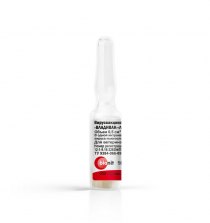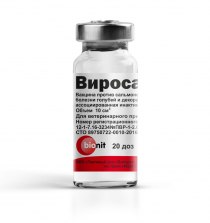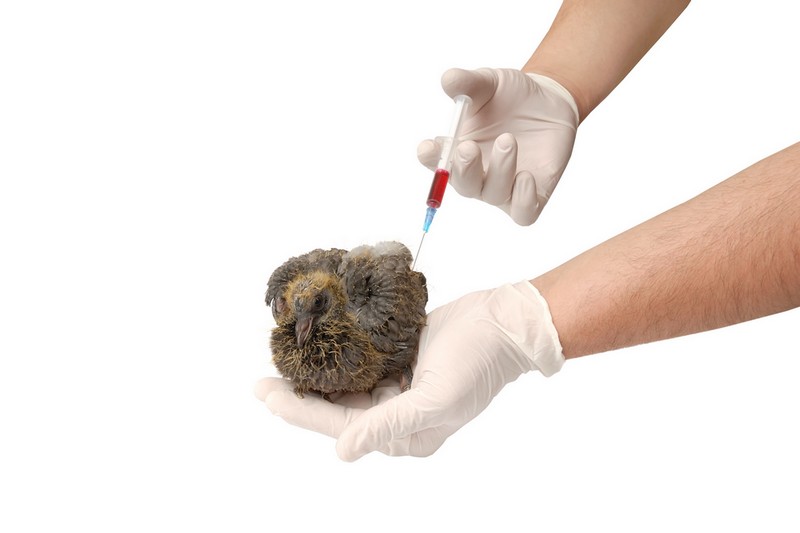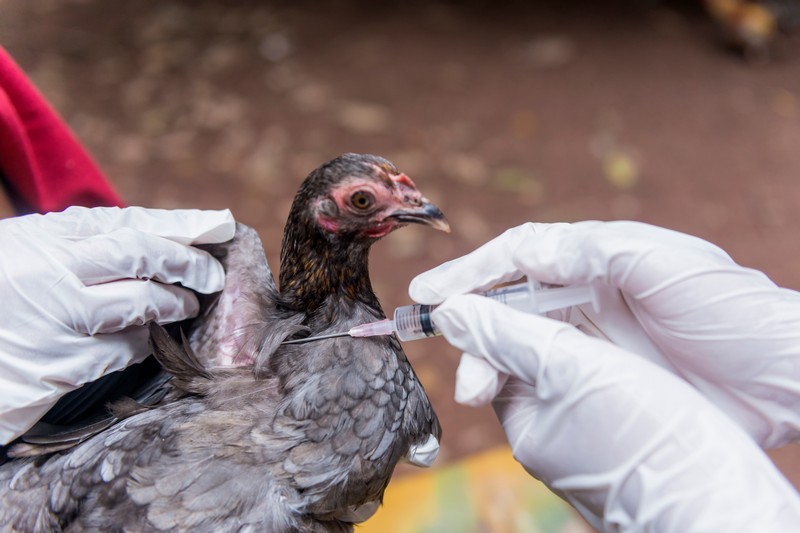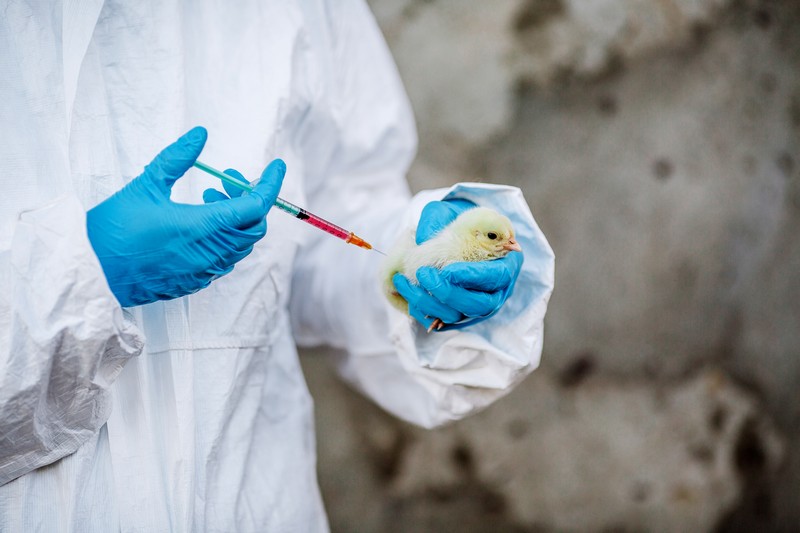Diseases of birds are dangerous not only for birds themselves but also for humans. Therefore, all breeders of chickens, turkeys, pigeons, parrots, canaries, sooner or later need to think about vaccinating pets. The Bionit company offers a wide selection of vaccines against diseases of birds of its own production. Our employees constantly work with strains, which allows us to produce the most effective products. We deliver purchased goods to customers in Moscow, to other regions on favorable terms.
Video on vaccination rules for pigeons and decorative birds
Diseases and their characteristics
![]()
Newcastle disease. Extremely dangerous infection, almost always leading to full or partial mortality of the livestock. It affects birds of all varieties and ages. It is carried along with feces, mucus from the beak, through the air. The disease is especially dangerous for large farms where birds are kept in cramped conditions.
![]()
Salmonellosis. It affects birds, animals, and humans. Pathogens from the genus Salmonella cause it. With the disease, the gastrointestinal tract is mainly affected. When a poultry farm or private farmsteads are infected with salmonellosis (salmonellosis avium), many young animals die. Surviving chickens noticeably lag behind in growth and it becomes economically disadvantageous to keep them. In addition, an ill bird remains a carrier forever and is able to infect others. These chickens get reduced immunity, so secondary infections begin to stick to them.
![]()
Para virus. A viral disease that is transmitted through litter, water, food, and air. Pets become infected by contact with wild relatives. May occur with various symptoms. Usually, the temperature of a bird rises, drowsiness appears, limbs are affected, and muscles atrophy. In laying hens, egg-laying is interrupted, eggs are poured out or eggs are laid in a thin shell. Litter is greenish or creamy white, foamy. Chickens die suddenly, without any signs of disease. Hens suffer from 3 to 7 days, in a herd, the disease lasts from 2 to 4 weeks. Depending on the severity, mortality can reach 100%.
![]()
Influenza (Grippus avium; highly pathogenic avian influenza, classical bird plague, chicken flu A, exudative typhus, Dutch chicken plague) is a highly contagious, acute viral virus that affects all types of birds with respiratory and gastrointestinal tract infections. It can take place in the form of epizootics, causing massive coverage of the livestock and having wide distribution - district, region, country.
![]()
Pasteurellosis (cholera). A bacterial disease that affects all types of domestic and wild birds. In Russia, outbreaks of the disease are recorded in all regions. More common in the private sector. Death occurs 18-72 hours after the first signs. Mortality ranges from 30 to 90% or more. The surviving pet is depleted and dehydrated, remains a lifelong carrier of infection.
![]()
Infectious bronchitis (Ib). A highly contagious disease affecting birds of different ages. It is characterized by damage to respiratory organs in young animals, damage to reproductive organs and loss of productivity in adult laying hens.
![]()
Clamidiosis (parrot disease). More often it affects unproductive species of poultry - pigeons, and parrots, but turkey and ducks are also at risk. This disease can be transmitted from animals to humans. A sick pet releases the pathogen into the external environment with nasal mucus and droppings. Infection occurs through food, through air, contact, through the sperm of males.
These are the most well-known diseases, but there are other infections that infect birds. In the vast majority of cases, birds have a general weakness, refusal of food, mucus of a yellowish-gray color appears, the neck may twist, the temperature may rise, and a cough may open. If any of the symptoms appear, the breeder should contact the nearest veterinary station to clarify the diagnosis and take appropriate measures.
Types of vaccines against bird diseases
Our company produces products in two forms, supplied in bottles of different volumes.
- Live (lyophilized). They are a dry mixture that was originally frozen, and then dried in a vacuum. Contain live virus cells.
- Inactivated (liquid). Produced by exposure to microorganisms chemically or by heating. They contain dead virus cells. They are specially grown in a suitable medium using the inactivation method.
Special warnings and precautions for use of our products
Vaccines from the Bionit company have various dosages and can be applied in several ways:
- Rearing method. The product is added to the water consumed by birds.
- Intramuscular / subcutaneous vaccination.
- Aerosol spraying. There are two types: large-drop and small-drop (depending on the age of the bird, vaccine, etc.). The smaller the drop, the deeper the vaccine virus penetrates the airways and the higher the level of the immune response.
Before use, you need to read the directions, if necessary, consult a veterinarian. It is not recommended to use products from damaged vials.







